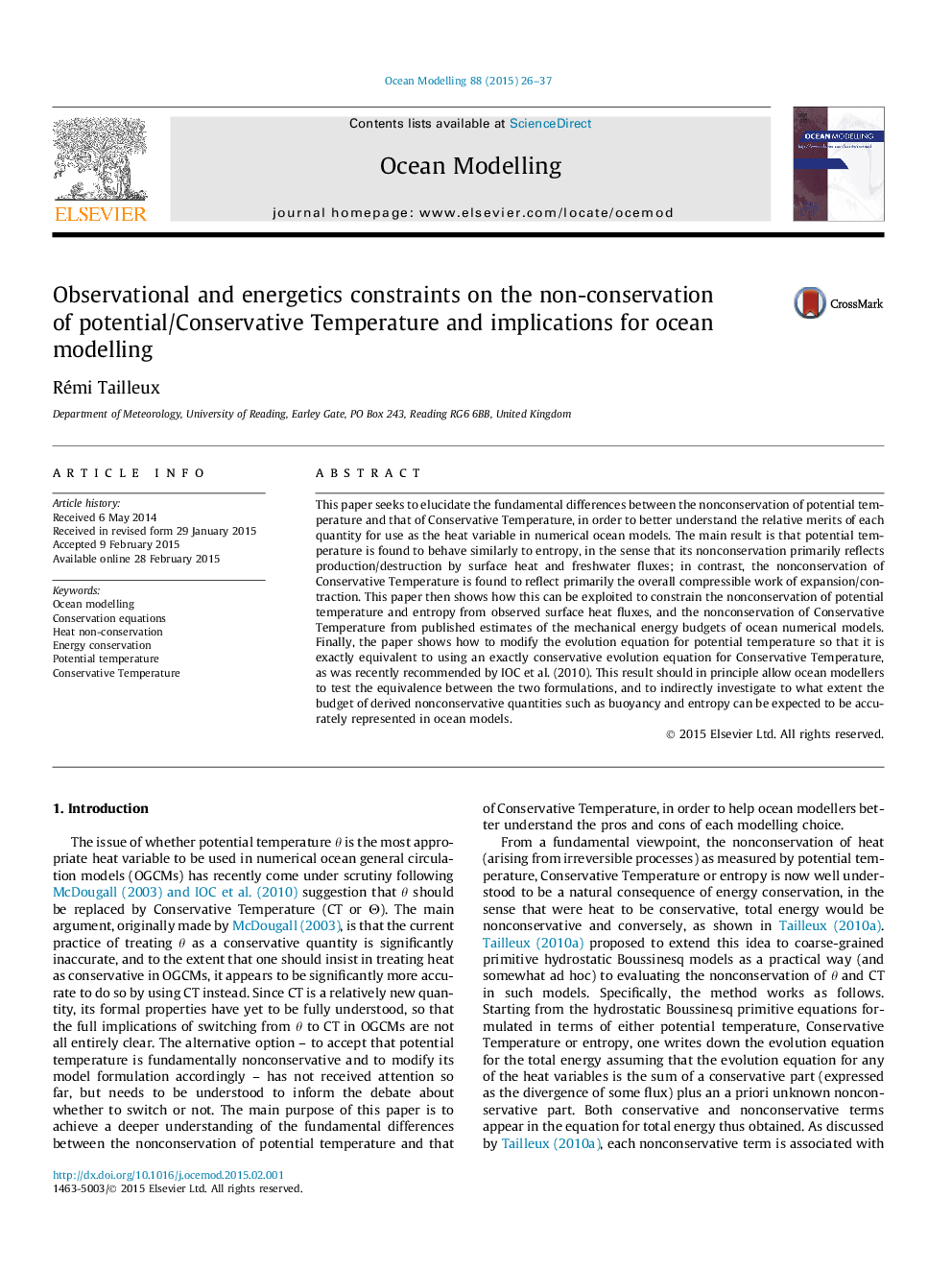| کد مقاله | کد نشریه | سال انتشار | مقاله انگلیسی | نسخه تمام متن |
|---|---|---|---|---|
| 6388150 | 1627760 | 2015 | 12 صفحه PDF | دانلود رایگان |
- We link nonconservation of potential temperature to surface buoyancy fluxes.
- We link nonconservation of potential enthalpy to work of expansion/contraction.
- We show that heat nonconservation is fundamental to total energy conservation.
- Simple change to OGCM sufficient to retain potential temperature nonconservation.
- Potential viable alternative to switching from potential to Conservative Temperature.
This paper seeks to elucidate the fundamental differences between the nonconservation of potential temperature and that of Conservative Temperature, in order to better understand the relative merits of each quantity for use as the heat variable in numerical ocean models. The main result is that potential temperature is found to behave similarly to entropy, in the sense that its nonconservation primarily reflects production/destruction by surface heat and freshwater fluxes; in contrast, the nonconservation of Conservative Temperature is found to reflect primarily the overall compressible work of expansion/contraction. This paper then shows how this can be exploited to constrain the nonconservation of potential temperature and entropy from observed surface heat fluxes, and the nonconservation of Conservative Temperature from published estimates of the mechanical energy budgets of ocean numerical models. Finally, the paper shows how to modify the evolution equation for potential temperature so that it is exactly equivalent to using an exactly conservative evolution equation for Conservative Temperature, as was recently recommended by IOC et al. (2010). This result should in principle allow ocean modellers to test the equivalence between the two formulations, and to indirectly investigate to what extent the budget of derived nonconservative quantities such as buoyancy and entropy can be expected to be accurately represented in ocean models.
Journal: Ocean Modelling - Volume 88, April 2015, Pages 26-37
